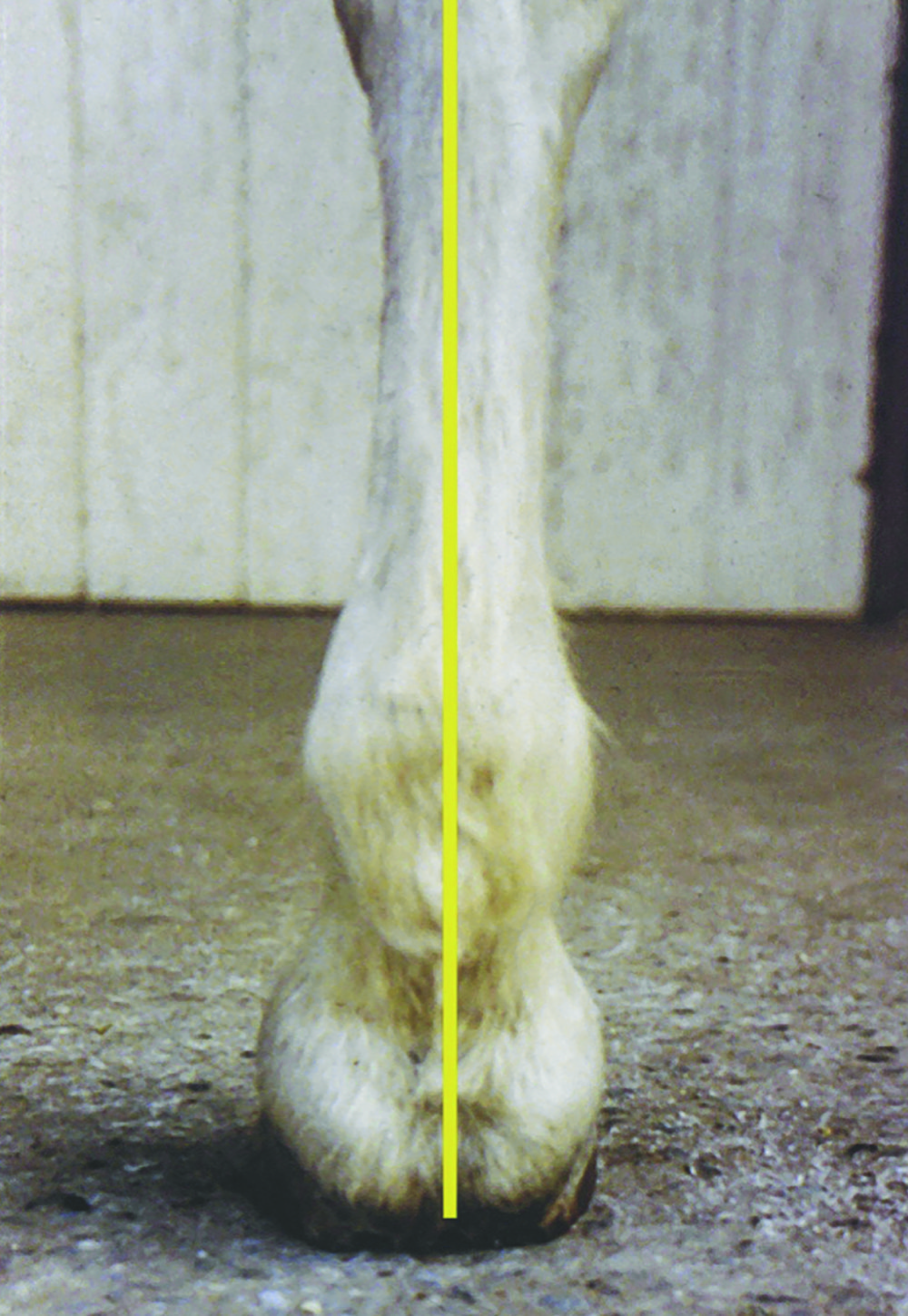 When we are trimming, we can have dramatic effects on the horse that perhaps we don’t realize. Uneven foot dressing can cause horses to adopt a stance that might be mistaken for poor conformation. One of the first things that I ask is whether a horse has poor conformation or adopted a compensatory stance? One is easy to fix, while the other is not.
When we are trimming, we can have dramatic effects on the horse that perhaps we don’t realize. Uneven foot dressing can cause horses to adopt a stance that might be mistaken for poor conformation. One of the first things that I ask is whether a horse has poor conformation or adopted a compensatory stance? One is easy to fix, while the other is not.
We can’t change conformation. We can compensate for it, but if that stance is man-made, even foot dressing, as a primary example, then we can change it just by thinking about it and doing it correctly.
Millimeters can affect posture. Look carefully at the pictured limb. What do you think is happening there? The limb is leaning across. Quite often a horse will adopt this stance when it’s laterally high. When the horse has this lateral layer, they tend to widen the base. If we think that’s posture post-trim, it changes. Now, the horse can pull its limb back underneath it, so that trimming affects that posture.
One thing I also do, is look down the long axis, short axis or whatever. I also take the limb forward and look down the skyline from the knee. If, for instance, the foot’s turned out when it’s on the ground and it’s still turned out after you lift it up, it’s conformation. Conversely, if you lift up a turned-out foot and it turns in or goes straight, that’s a posture adaptation. We can hopefully do something about it.
For more on compensation and conformation, read “Strategies For Correct Biomechanical Function” in the July/August 2018 issue of American Farriers Journal.








Post a comment
Report Abusive Comment